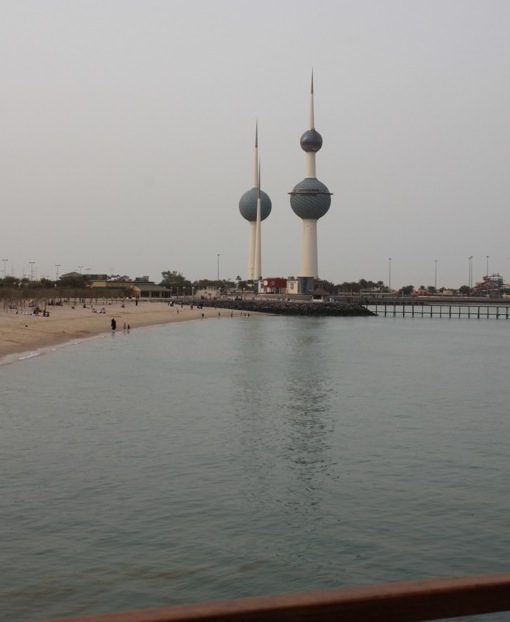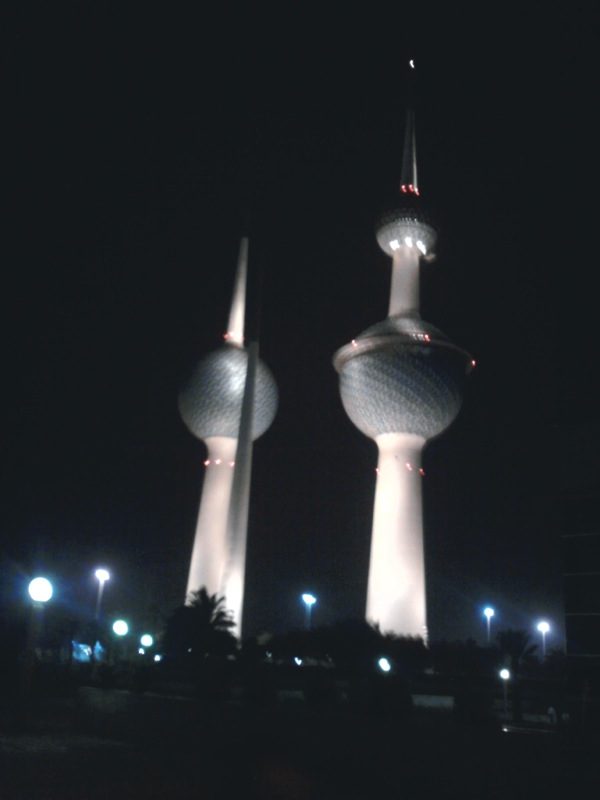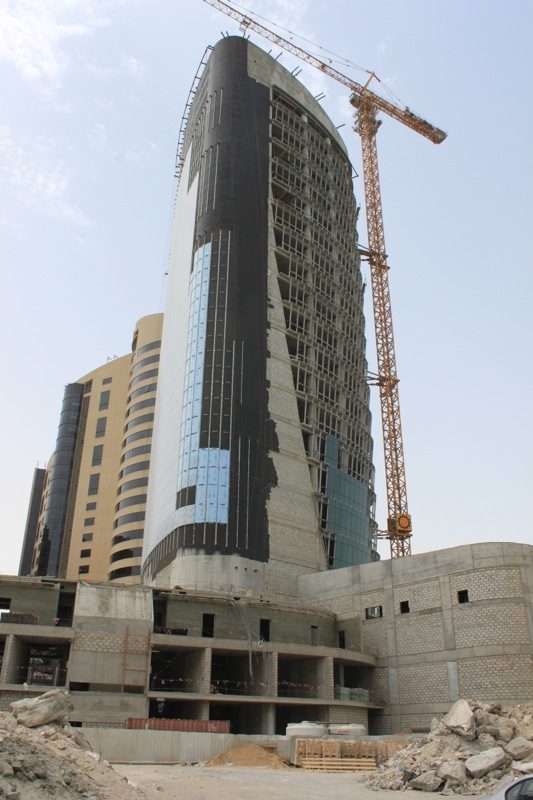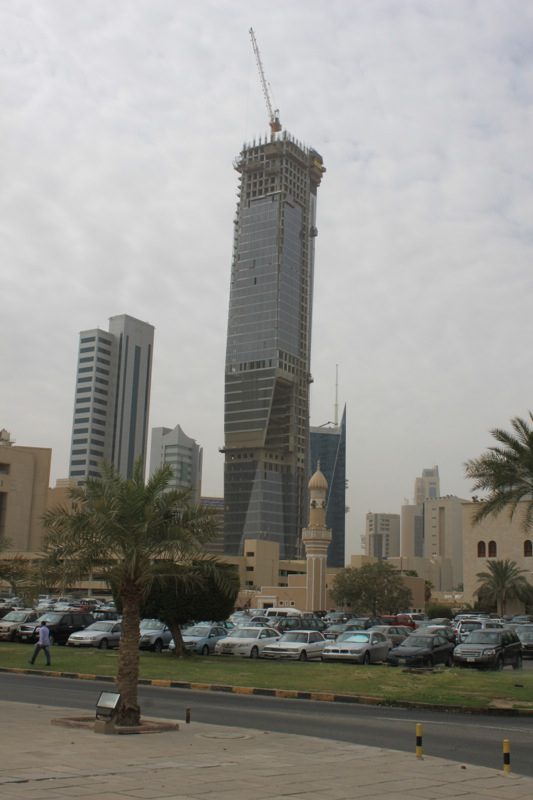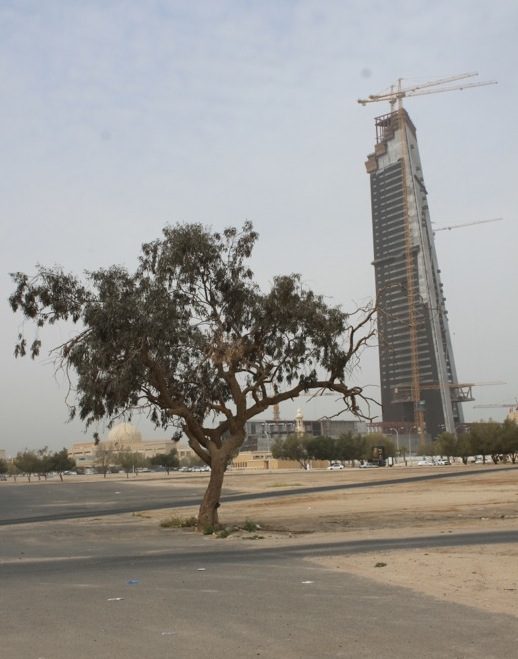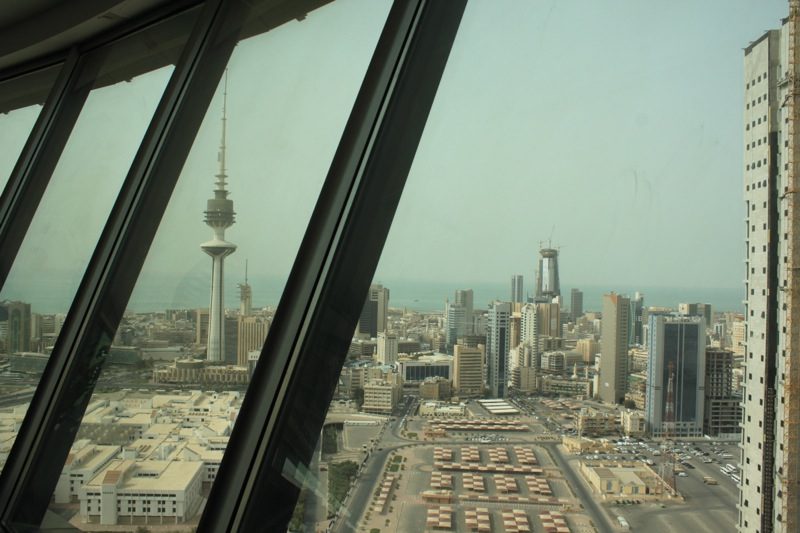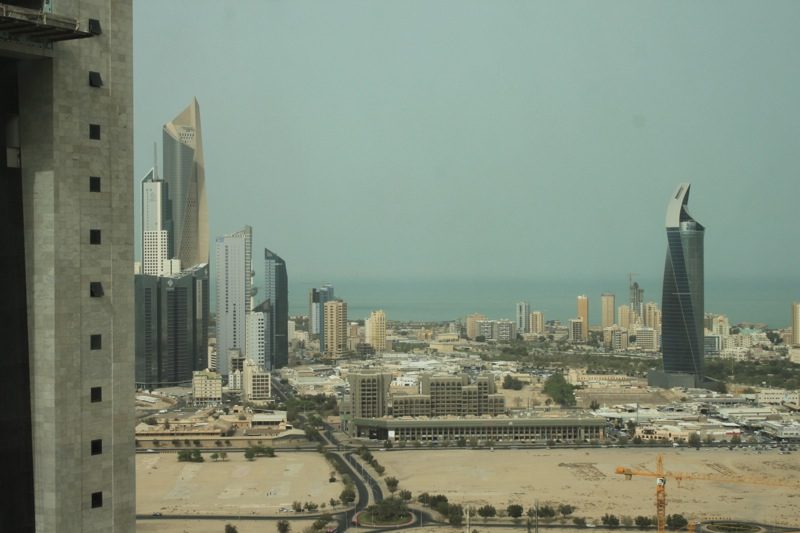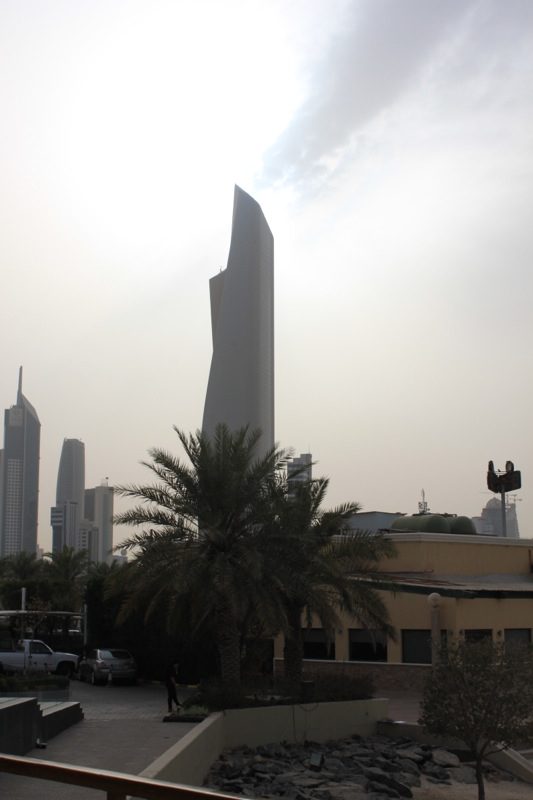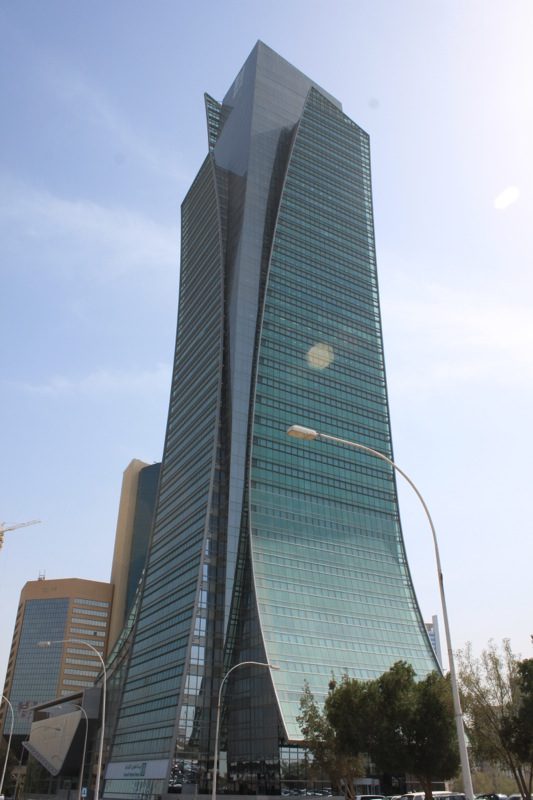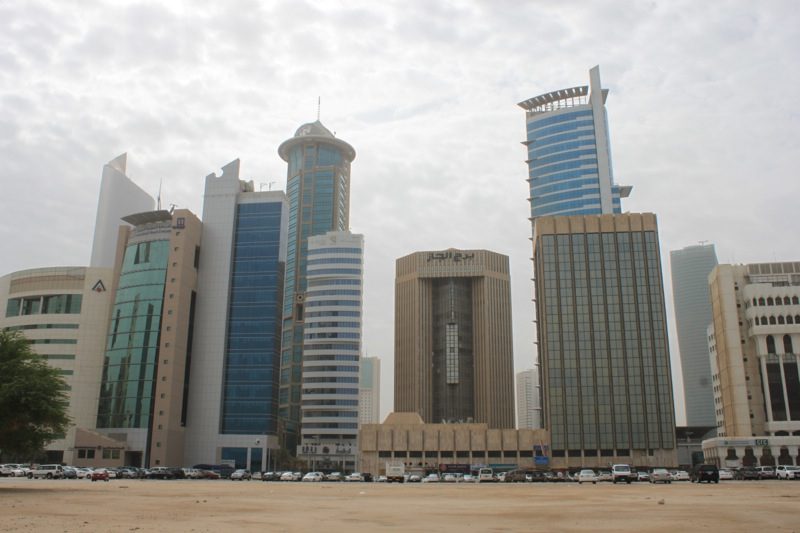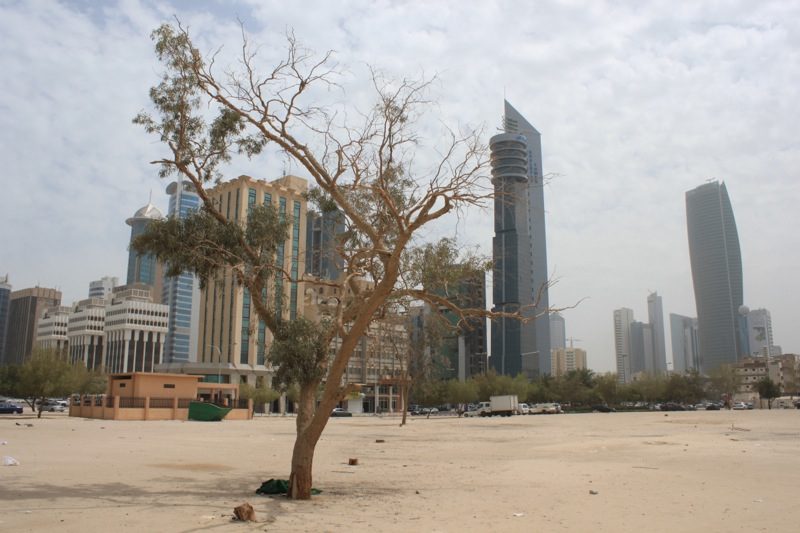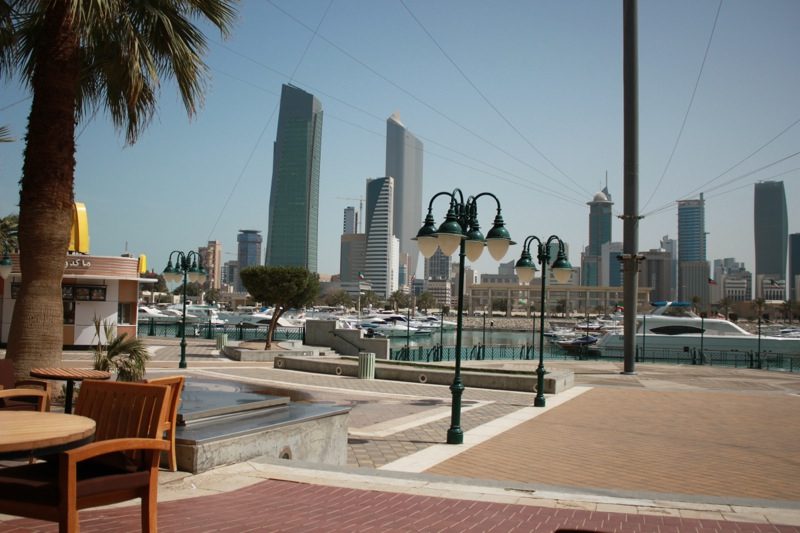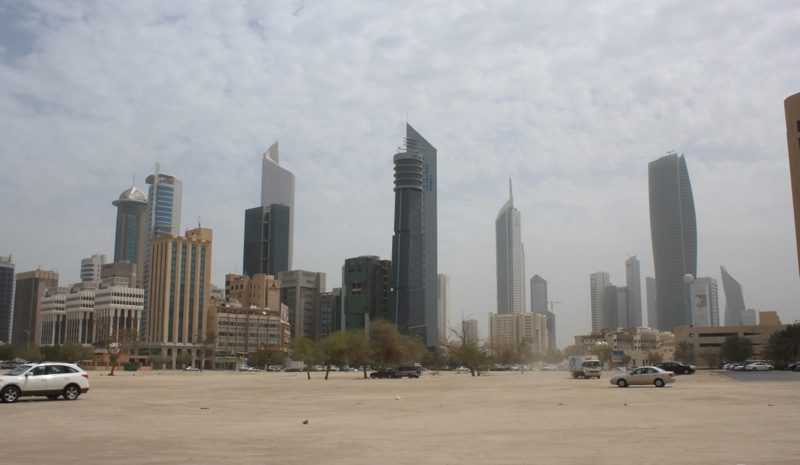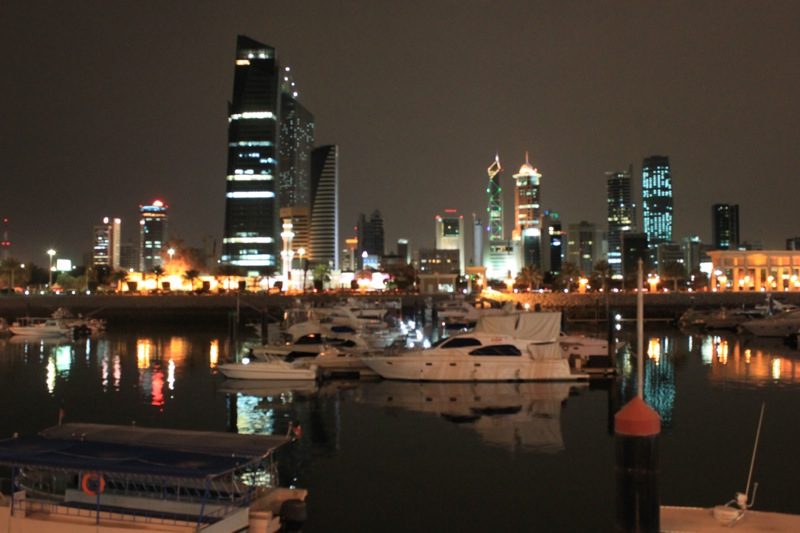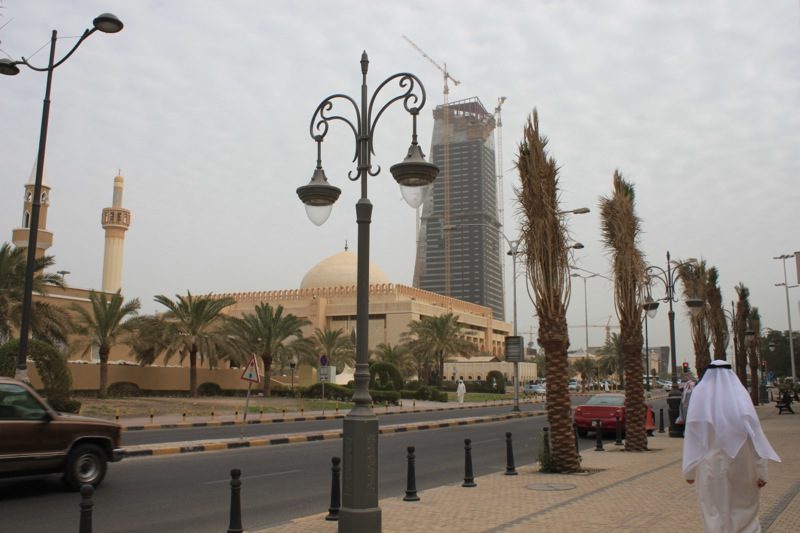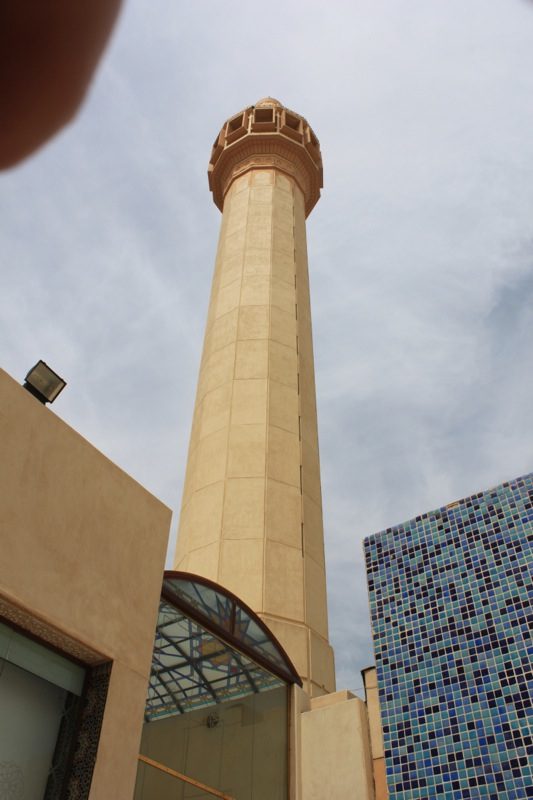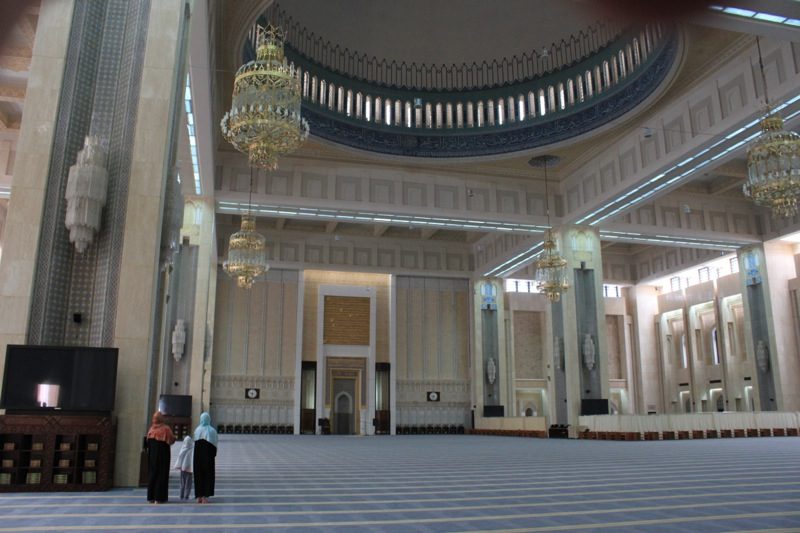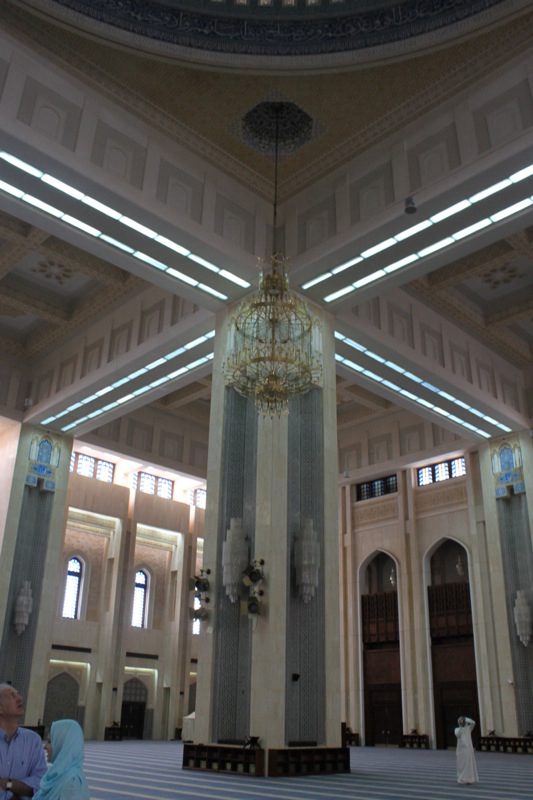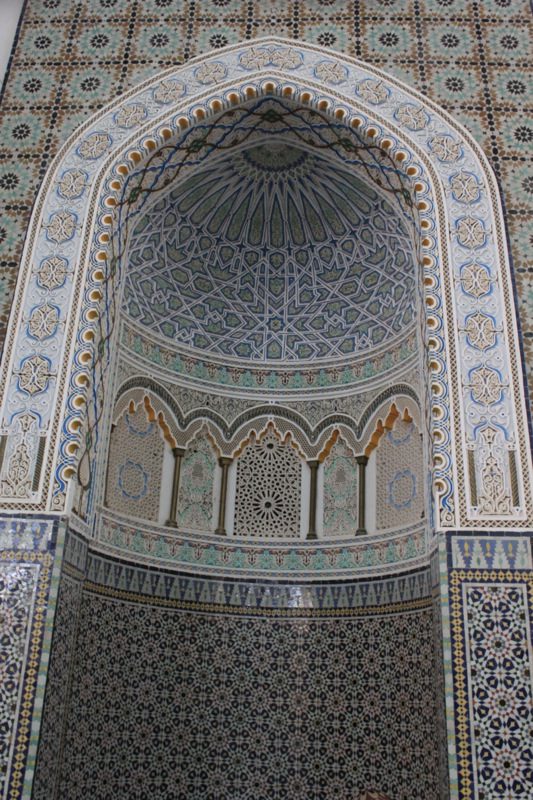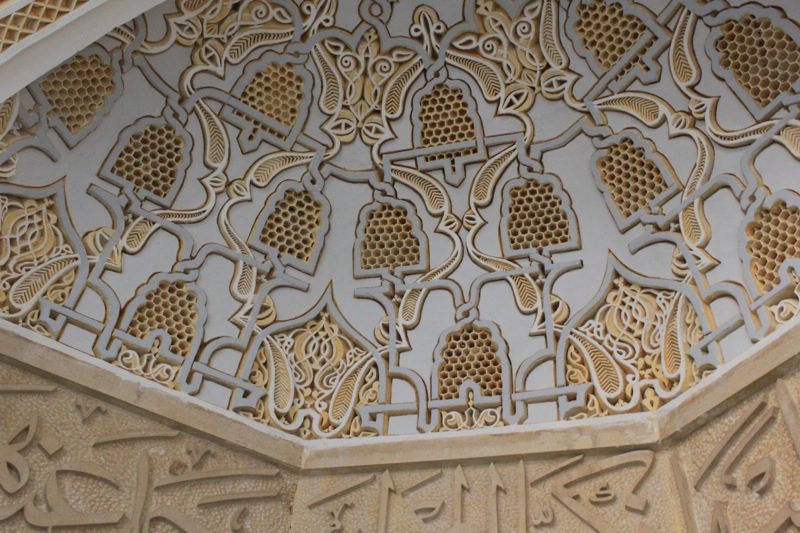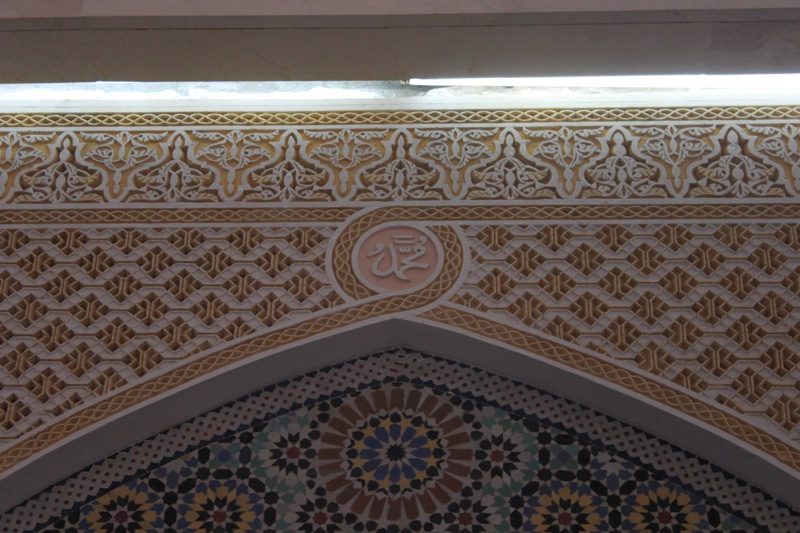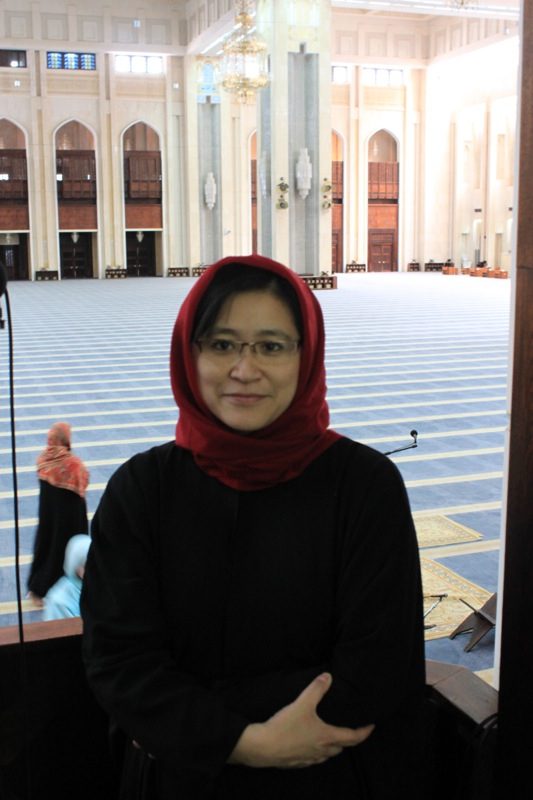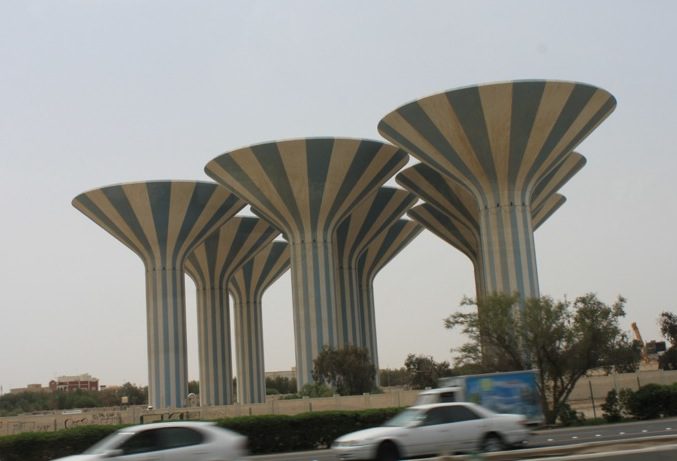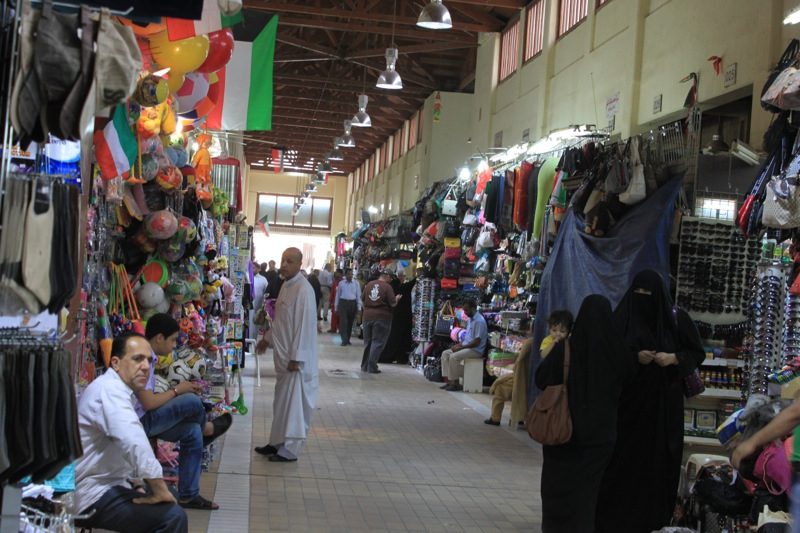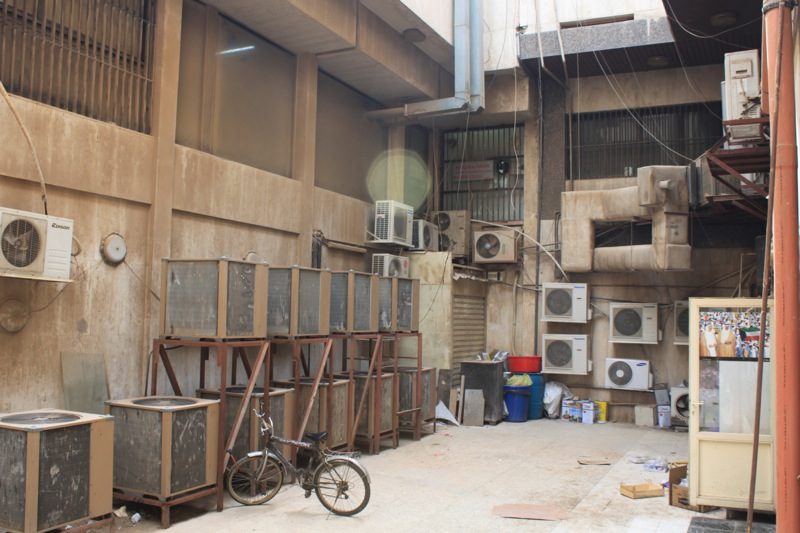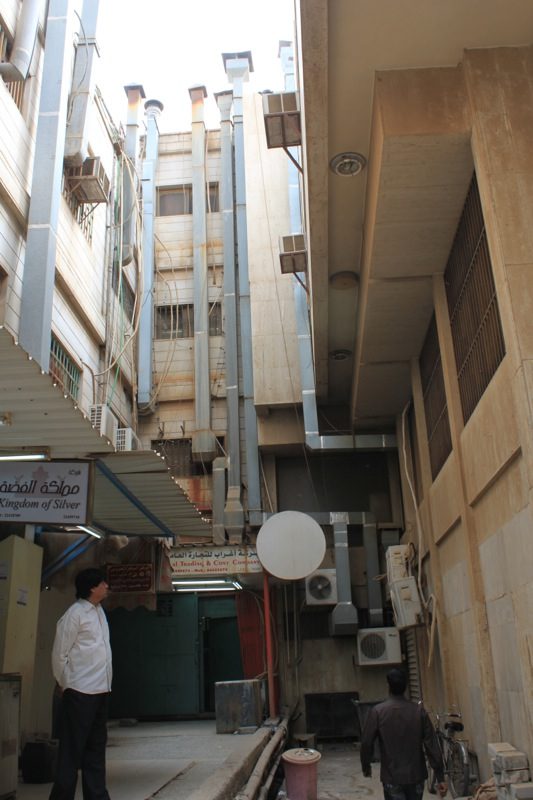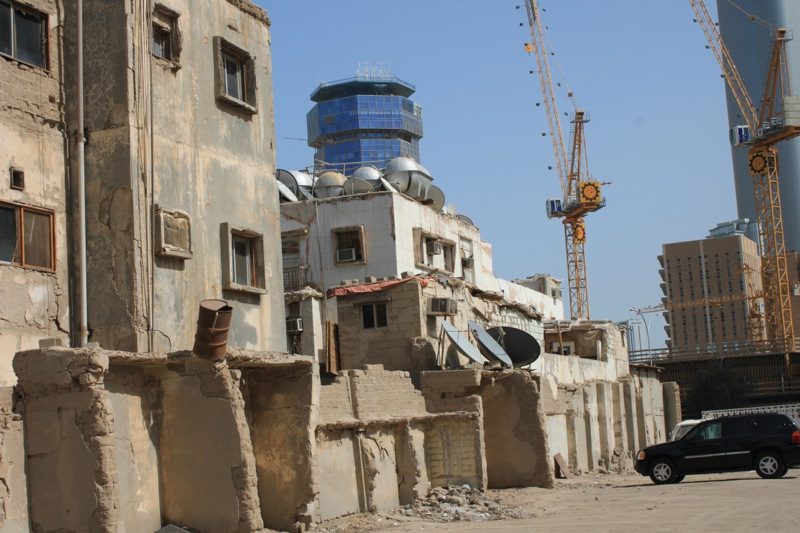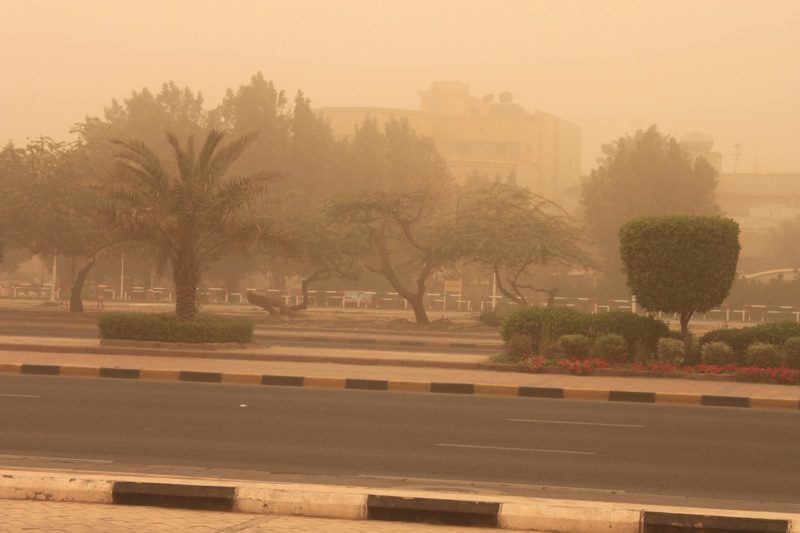I’ve been to Kuwait City a couple of times now – accompanying my Lady while she does some contract work – and I am always struck by how creative and beautiful the modern towers are there. They look like the sails of pearl fishing boats, or waves, or palm trees. Curves, insets, spectacular uses of openings and windows. The first time I was ever made aware of the architecture of that place was when I ran across a photo of the Water Towers of Kuwait. Amazing. They are even better in person. And if you go up inside please note that the deserts in the restaurant are delicious.
A linked Wikipedia picture of the Water Towers of Kuwait City

A view of the Water Towers of Kuwait showing a jetty on the Persian Gulf.
Night towers courtesy of a crappy cell phone camera.
There are many beautiful towers under construction. Families are the heads of corporations and they put their names on the buildings. I think that because the buildings tend to be a reflection of an individual family as opposed to a faceless Board attached to some public trading company, the architects are asked to make the buildings unique and to spend time on details that are creative and noteworthy.
The contrast between the flat, dusty, weather eaten buildings clustered at their feet, or the large expanses of sandy parking lots littered with windblown debris with these large, unique structures is quite striking.
The night lights of Old Kuwait City. These large, impressive buildings have unique, ever-changing lights that run up and down and around their length. It is very striking.
A mosque tower. I found the way you often saw rough sticks built into these towers quite interesting. There was a morning call to prayer while I was here, and I stood in the middle of a huge lot and looked around where at least 6 or 7 towers within sight had muezzin calling the prayers. It was a very Middle Eastern moment for me.
Walking by the Grand Mosque of Kuwait.
The tower for calls to prayer within the Grand Mosque of Kuwait.
The main prayer room of the Grand Mosque – apparently 10,000 people can pray in this room at the same time. The bands in the carpet direct the faithful where to kneel.
A 5-ton light fixture hanging in front of a pillar beside the main dome.
The alcove for Imans, or teachers, to stand while instructing the faithful. They face the wall and their voices are projected past them by the architecture.
Alcove detail. Note how the writing from the Koran is incorporated throughout the buildings walls and ceilings.
The view from the main pulpit of the Grand Mosque. As long as you are respectful you can visit pretty well any place within this area.
There are regular water towers here and there as well. Very cool.
Inside the colourful Old Souk.
A back street with air conditioners lining the walls.
Exhaust vents lined this back street. The shop keeper obviously wondered at what I was interested in when I took these photographs. I found the look very interesting and quite different from what I was used to here in Toronto.
A crumbling apartment building. Note the water tanks and satellite dishes that are to be found on every flat rooftop in Kuwait City.
A dust storm. I was lucky it was quiet where I sat in a coffee shop waiting for it to blow over. Apparently a few blocks away from here the visibility was so bad cars were pulling over because you couldn’t see any more than you would have if you were in a dense fog.
The dust collects everywhere. You also see coloured lights in lots of places. I thought it was neat the way the net of lights shown here polished the dust off of the window as the wind swung it back and forth.
I didn’t include any photos of the meals I’ve eaten. Just think Land of the Buffet. That, and budget at least 10 to 15 pounds added per 2-week visit (this includes 45 – 75 minutes per day in a gym trying to burn those calories back off!).
